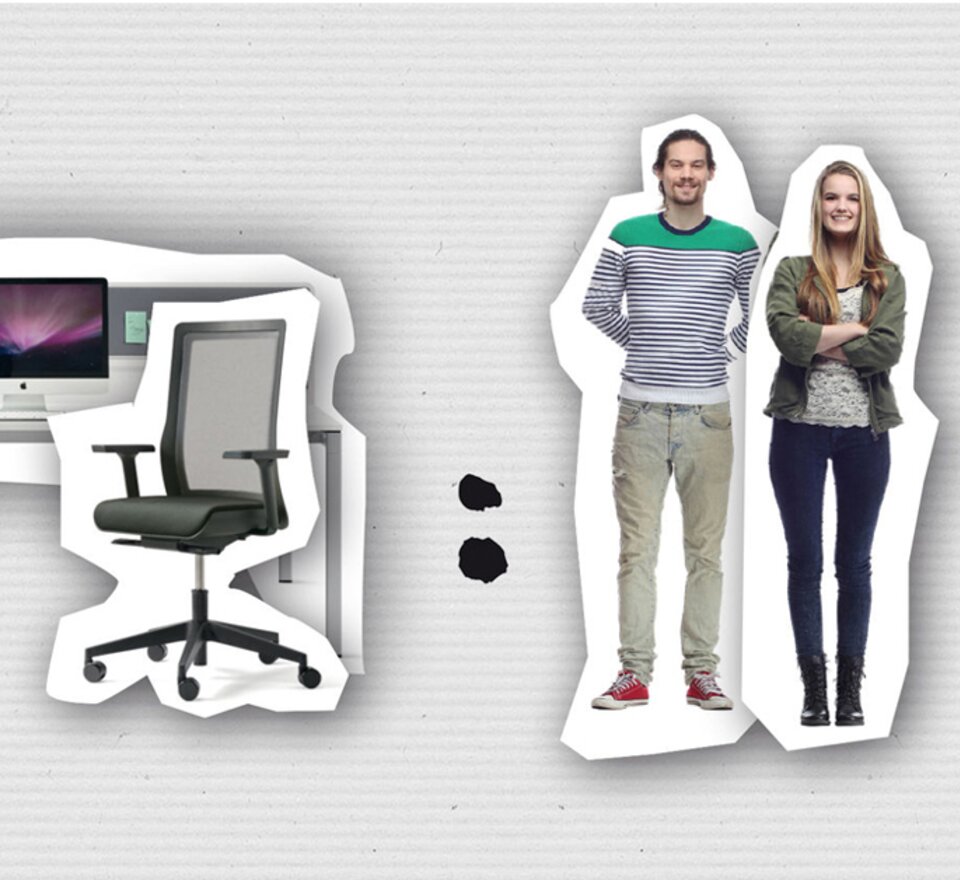Desk sharing is a constantly growing trend. Yet what are the advantages and disadvantages? What does an employer have to consider if he solely wants to offer his employees a shared workspace? And what does the future of this frequently misunderstood phenomenon look like?
Today Peter, tomorrow Sabine and the day aft er tomorrow the new apprentice from Papua New Guinea. The “neighbourhood” is a flexible, elastic term in a desk sharing office, as in contrast to the classic office there is no set workplace but people pitch a temporary tent where there happens to be space. The desk community is particularly common in the telecommunications branch and at IT companies, thus everywhere, where employees are used to frequent travel and the need to work while mobile.
“Desk sharing is not a patent remedy for every activity and definitely not for every company,” opines Sibylla Amstutz from Luzern University of Applied Sciences and Arts. She is the Director of the Human Building Division in the Typology & Planning Competency Centre in Architecture (CCTP). “It is important that each activity to be performed is associated with minimal paper and few work utensils and is thus conducive to desk sharing. However, the most important criteria is that the desk sharing identity is suitably conveyed and is appropriate to the corporate culture.” Another aspect of the success is compensating for the spatial loss of one’s own workplace. Meaning: “In a desk sharing office something substantial is taken away from people, namely the private sphere and the right to one’s own space. For this reason it is important to off set this loss against other features.”
Central zones and storage space as an emotional temporary home
There are plenty of examples for this. “When introducing desk sharing it is essential that there is a certain choice of spatial features as well as informal alcoves for meetings,” explains Bernhard Kern, Managing Director of Roomware Consulting GmbH. “It is of the utmost importance to concentrate on attractively designing the generally somewhat poorly lit central area - and indeed above all rather a bit too much than too little, as ultimately the employee must be off ered something like an experienced emotional home for a time.”
It is of primary importance, however, when removing a fixed workplace to include in the planning the corresponding storage space for work utensils and personal items. Key: “Storage space is indispensable. Whether this is provided for in the form of mobile rolling file cabinets or fixed files is ultimately the company’s decision. The bottom line is that it is important that the overall concept is harmonious.” The observation by Oliver Pestal, planner at the Viennese office designer, designfunktion, differs somewhat: “Rolling file cabinets function where people have gotten accustomed to working in the past 50, 60 years, in little cubicles without any private sphere - and they have to constantly move again and again, primarily in Great Britain and in the USA.
In Central Europe, on the other hand, I am pleading for employees to be offered a minimum of territory, and even if it’s only a personally allocated, builtin cabinet.” Some office concepts in the German-speaking territories, where this was not taken into consideration, failed and had to be correspondingly retrofitted, states Pestal.
“I find that the greatest risk of desk sharing is that the employer thereby hopes above all to save on valuable floor space and hence operating costs,” warns Bernhard Herzog, Head of Research and Development at M.O.O.CON. “In this event I vehemently advise against desk sharing, as the actual impetus should be another, namely the use of synergy effects as well as the desire for a specific optimisation of the work processes. In the foreground of all of the projects is “Activity Based Working,” a kind of theoretical further development of the classic desk sharing. Because: “The desk is not the best workplace for every activity,” says Herzog. “Some jobs can be better performed in other spatial configurations and constellations. If all that is taken into consideration then a diversified and versatile workplace offer is created, independent from need. That’s where I see the genuine potential of desk sharing.”
Desk sharing – not an all-round solution
Back to Peter and Sabine – or even Anna and the new sales rep, Maximilian? Desk sharing, be it now at a common workbench or in individually, separate workstations, may never be done at the cost of the employee, says Sibylla Amstutz, Luzern University of Applied Sciences and Arts. It is this important to always offer a home base within the same department to desk sharing employees, which in turn should not exceed a certain number of employees.
What does the future of the shared desk look like? Experts agree on one thing: Desk sharing will never be the all-around solution for everything but rather remain a special solution for special, contemporary thinking companies. Or, as Bernhard Herzog said: “Desk sharing is a trend that is impossible to ignore and it will continue to increase, simply due to the fact that our work lives are increasingly more mobile. However, to believe that one day every second office will be a desk sharing office, is an illusion.”
Wojciech Czaja

